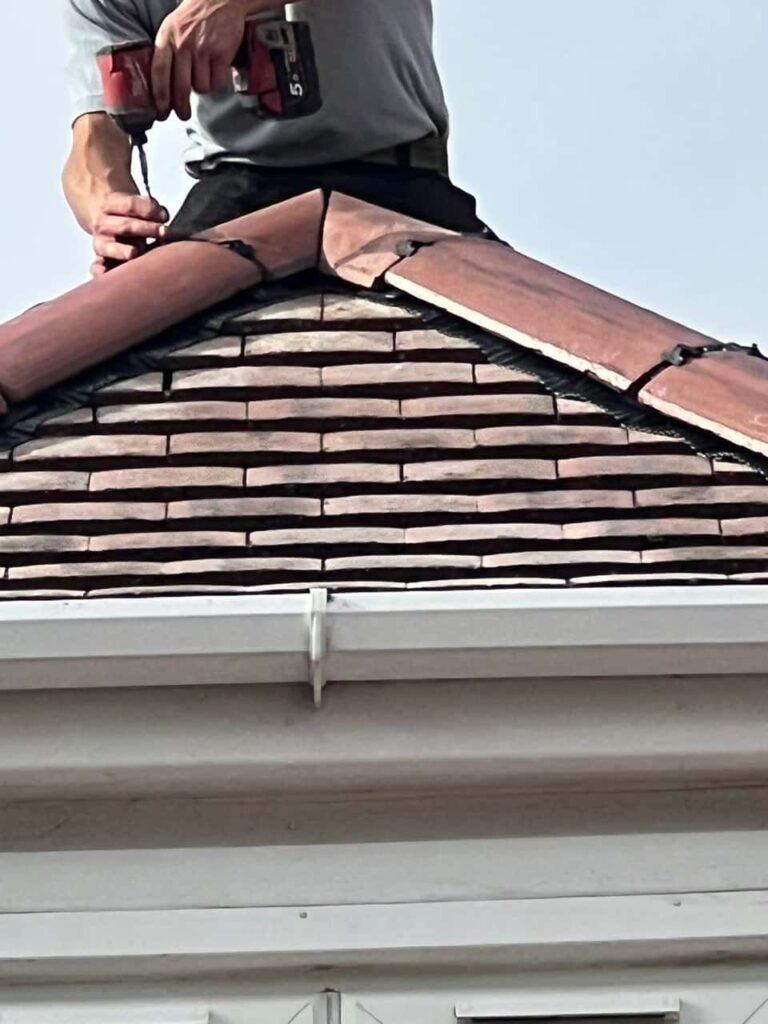Slate roofs are known for their durability, aesthetic appeal, and ability to withstand harsh weather conditions. However, like all roofing materials, the performance of a slate roof depends largely on the quality of the installation. Poor installation practices can lead to leaks, damage, and the need for costly repairs. In this article, we will discuss common signs of poor slate roof installation and provide tips on how to spot these issues early to protect your home.
1. Improper Placement of Slate Tiles
One of the most critical aspects of slate roof installation is the proper alignment and placement of the slate tiles. Tiles should be installed in a consistent, overlapping pattern to ensure proper water drainage. If the tiles are placed unevenly or overlap incorrectly, water can seep beneath them, causing leaks and other issues.
How to Spot This:
- Look for tiles that appear misaligned or out of place.
- Check for gaps between tiles that could allow water to infiltrate.
- Ensure the tiles follow the natural flow of the roof, allowing rainwater to run off efficiently.
2. Use of Incorrect Nails or Fasteners
Slate roofing requires specific nails or fasteners designed for use with the material. Using the wrong type of fasteners, such as those made of non-corrosive materials, can cause the slate to loosen over time, especially when exposed to the elements. This can lead to costly repairs and potential damage to your roof structure.
How to Spot This:
- Check if the nails used are visible and if they have been driven in properly.
- Inspect for rusting or corrosion around the fasteners, as this may indicate the use of incorrect materials.
- Ensure that fasteners are installed in the correct location and are not causing any cracks in the slate.
3. Insufficient Underlay or Waterproof Membrane
A waterproof underlay or membrane is crucial for any roof, including slate roofs. It acts as an extra layer of protection against water infiltration. Inadequate or missing underlay can result in water damage to the roof structure, especially during periods of heavy rainfall.
How to Spot This:
- If your roof is old or has been poorly maintained, check if the underlay is still in good condition.
- Look for any signs of water staining or dampness inside your loft space, which could indicate leaks.
- A roofing professional should inspect the underlay regularly as part of a routine maintenance check.
4. Poor Ventilation
Proper ventilation is essential for maintaining a healthy slate roof. Without adequate airflow, moisture can build up in the attic, leading to wood rot, rust, and potential mould growth. Poor ventilation can also shorten the lifespan of your roof and increase the likelihood of leaks.
How to Spot This:
- Check if the ventilation system is blocked or obstructed by insulation, debris, or other materials.
- Look for signs of condensation or dampness in your attic space.
- Ensure that your roof has the correct type and number of vents for optimal airflow.
5. Slates Not Properly Cut or Trimmed
Slate tiles need to be carefully cut and trimmed to fit the roof. Improper cutting can result in gaps, uneven edges, and poor alignment. If the slates are not cut correctly, they can become loose, crack, or allow water to penetrate underneath.
How to Spot This:
- Inspect the edges of your slate tiles to ensure they are straight and well-cut.
- Look for any tiles that seem out of place or do not fit snugly with the surrounding tiles.
- Check for cracks or damage along the edges of the slates, which could indicate improper handling during installation.
6. Inconsistent Slate Quality
Another common issue with poor slate roof installation is the use of inconsistent or low-quality slate tiles. Slate is a natural material, and not all slates are created equal. Some tiles may have defects or poor structural integrity, leading to premature failure of the roof.
How to Spot This:
- Examine the slate tiles for signs of damage, such as cracks, chips, or uneven thickness.
- Check if the tiles are uniform in colour, size, and shape. Variations in quality can lead to an uneven appearance and reduced lifespan.
- Request a professional inspection if you suspect that subpar materials were used during installation.
7. Flashing Installation Issues
Flashing is essential for sealing roof joints and preventing water from seeping in. Improperly installed flashing can lead to leaks, especially around chimneys, valleys, and roof edges. Flashing should be securely attached and properly sealed to ensure effective waterproofing.
How to Spot This:
- Look for any gaps or lifting around the flashing.
- Inspect the flashing for rust or deterioration, which can be a sign of poor installation or the wrong materials.
- Check for water stains or dampness around roof joints and openings, which could indicate leaking flashing.
Conclusion
Ensuring that your slate roof is installed properly is essential for its longevity and performance. Poor installation practices can lead to a variety of issues, from leaks to premature roof failure. Regular inspections by a professional roofing company are essential to catch any potential problems early. If you notice any of the signs mentioned above, it’s important to address them promptly to avoid more significant damage down the line.
If you’re in the Burgess Hill, West Sussex area and are concerned about your slate roof, or if you’re planning a new slate roof installation, don’t hesitate to contact us. Our experienced team can help assess your roof and make sure it’s installed correctly, offering peace of mind for years to come.
Call us on: 01444 711 397
Click here to find out more about Burgess Hill Roofing Repairs
Click here to complete our contact form and see how we can help with your roofing needs.

